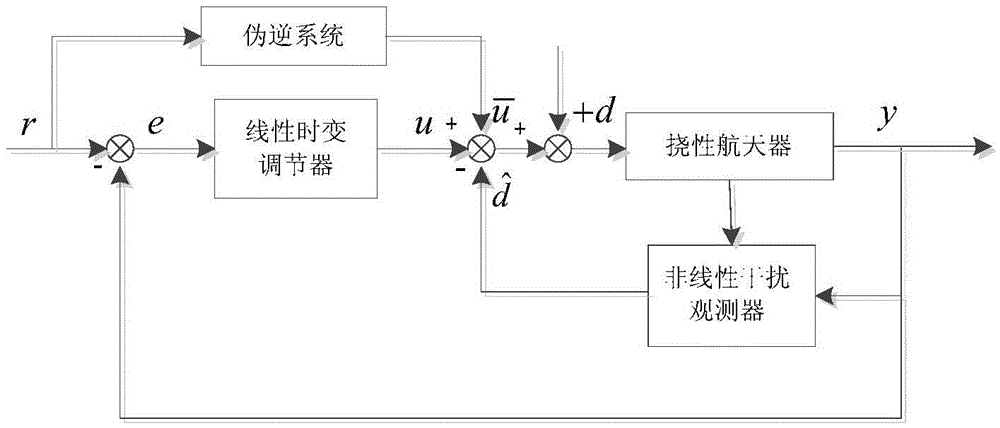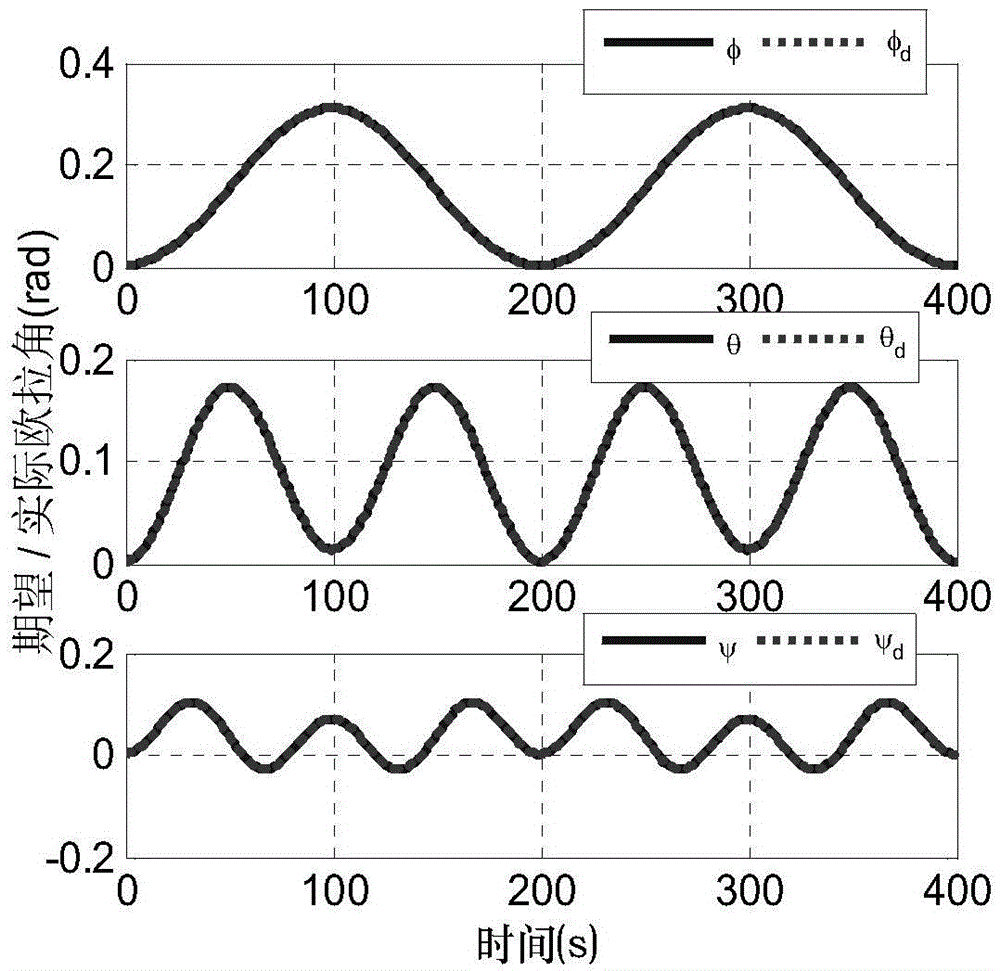Flexible satellite locus linearization attitude control method based on disturbance observer
A trajectory linearization, interference observer technology, applied in attitude control and other directions, can solve problems such as weak interference suppression ability and poor robustness
- Summary
- Abstract
- Description
- Claims
- Application Information
AI Technical Summary
Problems solved by technology
Method used
Image
Examples
specific Embodiment approach 1
[0086] Specific embodiment one: a kind of attitude control method of flexible satellite trajectory linearization based on disturbance observer comprises the following steps:
[0087] Key steps of the present invention:
[0088] 1. Satellite attitude control
[0089] The attitude control of the satellite includes attitude determination, attitude stabilization control and attitude maneuvering control. Attitude determination is to study the orientation or direction of the spacecraft relative to a reference datum, and then obtain the attitude angle parameters, and its accuracy depends on the accuracy of the attitude sensor and attitude algorithm. Attitude stabilization control is to keep the attitude of the aircraft in the expected direction and specified value. Attitude maneuvering is the process of reorienting an aircraft from one attitude to another. The patent of the present invention mainly conducts in-depth research on the attitude tracking control of the flexible satelli...
specific Embodiment approach 2
[0251] Embodiment 2: The difference between this embodiment and Embodiment 1 is that the specific process of dynamic modeling of the flexible spacecraft in the step 1 is:
[0252] The hybrid coordinate method is used to describe the motion of the spacecraft with flexible appendages, that is, the central rigid body uses the coordinates (such as Euler angles) that usually describe the attitude of the rigid body, and the flexible appendages are described using discrete modal coordinates. In this way, a dynamic model that can accurately describe the motion of the spacecraft and is convenient for the analysis and design of the spacecraft control system is established.
[0253] Regardless of the rotation of the sail relative to the spacecraft body, the dynamic equation of the flexible spacecraft is as follows:
[0254] J ω · + ...
specific Embodiment approach 3
[0257] Specific embodiment three: the difference between this embodiment and specific embodiment one or two is: the differential form of the control variable appears in the nominal control in the step two, and a quasi-differentiator is needed to obtain the derivative of the nominal state. The present invention uses a first-order A quasi-differentiator of the form:
[0258] G d i f f ( s ) = s ( 1 ω n , d i f f s + 1 ) - - - ( 17 ...
PUM
 Login to View More
Login to View More Abstract
Description
Claims
Application Information
 Login to View More
Login to View More - R&D
- Intellectual Property
- Life Sciences
- Materials
- Tech Scout
- Unparalleled Data Quality
- Higher Quality Content
- 60% Fewer Hallucinations
Browse by: Latest US Patents, China's latest patents, Technical Efficacy Thesaurus, Application Domain, Technology Topic, Popular Technical Reports.
© 2025 PatSnap. All rights reserved.Legal|Privacy policy|Modern Slavery Act Transparency Statement|Sitemap|About US| Contact US: help@patsnap.com



